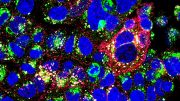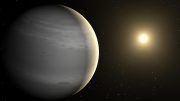
Two groundbreaking studies have developed a method for controlling quantum entanglement in molecules, specifically calcium fluoride (CaF), using an optical tweezer array to create highly entangled Bell states. This advancement opens new avenues in quantum computing and sensing technologies.
Advancements in quantum entanglement with calcium fluoride molecules pave the way for new developments in quantum computing and sensing, utilizing controlled Bell state creation.
Quantum Entanglement in Molecules
Quantum entanglement with molecules has long been a complex challenge in quantum science. However, recent advancements have emerged from two new studies. These studies showcase a method to tailor the quantum states of individual molecules, achieving quantum entanglement on demand. This development offers a promising platform for advancing quantum technologies, including computation and sensing. Quantum entanglement, a fundamental aspect of quantum mechanics, is vital for various quantum applications.
Advances in Molecule-Based Quantum Entanglement
Ultracold molecules, with their intricate internal structure and long-lived rotational states, are ideal candidates for qubits in quantum computing and quantum simulations. Despite success in creating entanglement in atomic, photonic, and superconducting systems, achieving controlled entanglement between molecules has been a challenge. Now, Yicheng Bao and colleagues, along with Conner Holland and colleagues, have developed a method for the controlled quantum entanglement of calcium fluoride (CaF) molecules.
Breakthrough in Quantum Computing and Sensing
These studies utilized the long-range dipolar interaction between laser-cooled CaF molecules in a reconfigurable optical tweezer array. They successfully demonstrated the creation of a Bell state, a key class of entangled quantum state characterized by maximum entanglement between two qubits. The Bell state is crucial for many quantum technologies.
Both studies show that two CaF molecules located in neighboring optical tweezers and placed close enough to sense their respective long-range electric dipolar interaction led to an interaction between tweezer pairs, which dynamically created a Bell state out of the two previously uncorrelated molecules.
“The demonstrated manipulation and characterization of entanglement of individually tailored molecules by Bao et al. and Holland et al. paves the way for developing new versatile platforms for quantum technologies,” writes Augusto Smerzi in a related Perspective.
References:
“Dipolar spin-exchange and entanglement between molecules in an optical tweezer array” by Yicheng Bao, Scarlett S. Yu, Loïc Anderegg, Eunmi Chae, Wolfgang Ketterle, Kang-Kuen Ni and John M. Doyle, 7 December 2023, Science.
DOI: 10.1126/science.adf8999
“Entanglement with tweezed molecules” by Augusto Smerzi, 7 December 2023, Science.
DOI: 10.1126/science.adl4179









Does physics truly understand the physical essence of quantum?
What are Breaking the Cold Barrier and The Cutting-Edge of Quantum Entanglement?
Physics is guided by correct theories can make physical experiments more scientific, concise, and efficient.
The so-called academic journals (such as Physical Review Letters, Nature, Science, etc.) firmly believe that two objects (such as two sets of cobalt-60) rotating in opposite directions can form a mirror image of each other. This is a blatant insult to the public’s intelligence.
Every scientific worker should not turn a blind eye to this blatant hypocrisy, filth, and ugliness.
What should the American Association For The Advancement Of Science (AAAS) do? They should be clearer than anyone else.